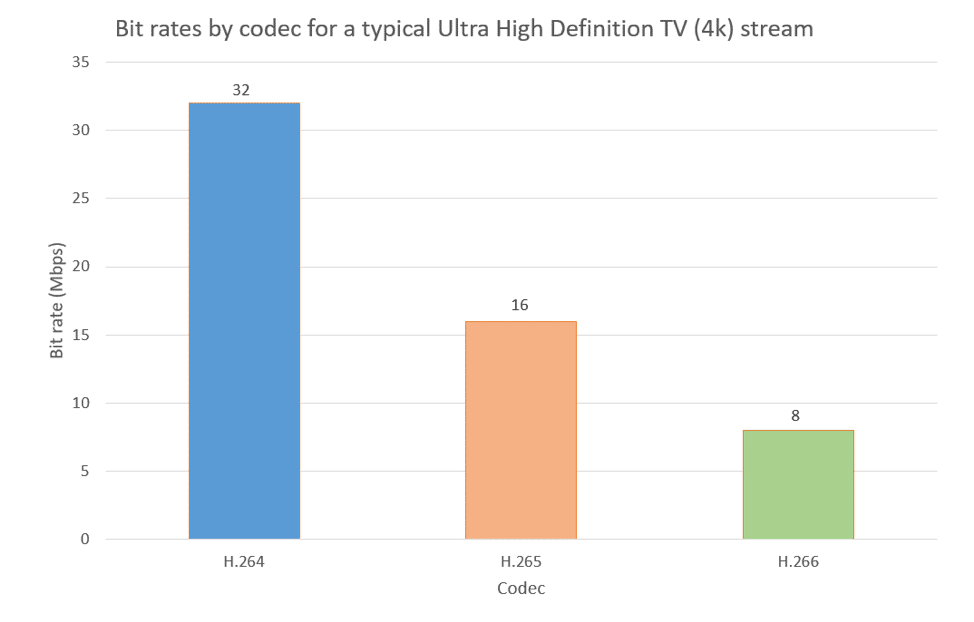The Real Impact of 8K TVs on Storage
By Craig Lamb
Our TV viewing experience and how we consume content was radically changed by Digital Video Recorders (DVR) long before on-demand streaming services even existed. They allowed satellite, cable, and terrestrial DVB to feed DVRs with a constant stream of content which was stored on a drive beneath the TV.
This model still works very well. Millions of consumers leverage subscription TV alongside newer streaming services and apps. And, in some cases the app-based services have been merged into the broadcaster platforms for a more polished ‘TV hub’. But the way we consume content is changing.
Internet connectivity has improved dramatically, supporting more capable cloud-based services. That means the bulk of data is now stored remotely in the cloud. In line with the changing face of how digital content is consumed is also the move to higher definition content. The current buzz being 8K TVs, supporting a monstrous number of pixels (more than 33 million!). But here we’re experiencing something of a paradox: a reduction in storage demand on the viewing device.
While this seems counterintuitive considering higher definition content, it may be what ushers a faster adoption of 8K TVs. Here’s why.
8K Explained
8K or to be more precise, 7680, is the number of horizontal lines of pixels that make up the current broadcast 8K ultra HD television standard, which itself is a progression from 4K UHD, HD, and SD. In total the pixel count for an 8k image is (7680 × 4320), or as mentioned above, slightly larger than 33 million pixels.
Earlier this year saw a press release for a new standard – H.266, also known as VVC, Versatile Video Codec from the Fraunhofer Society. This new codec promises a whopping 50% improvement in efficiency versus the previous H.265 codec.
But what exactly are codecs, and why is this important in easing the evolution to an 8K TV reality?
Wait, What are Codecs?
Digital content in its native uncompressed high-resolution form takes up a huge amount of storage space, far too much to be transmitted from the broadcaster to the end users. For example, an uncompressed 2-hour 8K video recorded in ‘cinema quality,’ results in a file size of over 35TB and potentially much higher with improved frame rates and color bit depths.
To make content usable for consumers, it is compressed using an encoder and decompressed using a decoder, this is shortened to the portmanteau ‘codec’.
Video codecs work by removing the similarities from uncompressed frames of digital video and encoding the differences using complex compression algorithms. The codec efficiency relies on computational power to decode the transmitted broadcast video signal.
Typically, the codecs utilized are ‘lossy’ (some audio codecs are lossless) meaning the resultant decoded video playback is not always the same as the original video. So, the ability of the codec to both minimize the losses while maximizing the compression means it is an important part of the broadcast chain. Typically, this stream of encoded video is measured in Megabits per second – Mb/s and is termed ‘bit rate’.
Hello, Bit Rates
Most codecs utilize variable bit rates (VBR) as the bit rates are changing in real-time based upon the complexity of the images (think of a panning shot of a crowd of people where there are lots of changes between frames), but some applications do use constant bit rates (CBR) where controlled bit rates are required.
Bit rates vary largely based upon the codec used and the image complexity (frame rate, color enhancements etc.). And, some broadcasters also choose to raise compression to account for available bandwidth.
Here’s an overview of existing bitrates for various definitions:
SD – Standard Definition TV, between 0.5 to 2 Mbps.
HD – High Definition, between 3 to 9Mb/s
4K – 4K UltraHD, between 10 to 30Mb/s
8K – Using H.265, between 60 to 80 Mbps.
Here Comes H.266
If the newer H.266 improves the existing H.265 bitrate by 50%, it will result in 30 to 40 Mb/s for 8K content. It’s pretty much magic considering that the uncompressed bitrate for the 8K/12 bit/60 Hz format is approximately 72 Gbps!
It’s important to note that H.266 is not used in available products yet, as the hardware to decode is still being developed.
As codec efficiency improvements continue with each new standard we can see certain effects. This chart shows the progression in bit rate reduction up to H.265, H.266 promising yet another 50% improvement.

The organization that announced H.266 has been at the forefront of codecs since the 1970’s and interestingly were involved in the creation of probably the best-known codec of them all, MP3.
The Future of 8K, Codecs and Beyond
Historically, digital content was associated mainly with home TV viewing. But digital content is everywhere now – from creating and consuming on our mobile devices to our car. Yes, automotive applications also rely heavily on video processing for automated driver features.
The rise of more efficient codecs will enable new applications that can bring higher definition to
more devices and end points without breaking the network, or requiring massive storage capabilities. We’ll likely see new trends in gaming and virtual reality that will be driven by the benefits of these newer codecs. What’s clear is that storage will remain essential to this transition, and Western Digital products will enable these next-generation applications with features that can contend with the challenges of moving and storing data in diverse environments.
8K is an All New Territory
8K is an all new territory. 8K is not about TV displays at all, but rather about data efficiency. In economics there is an effect known as ‘the Jevons paradox’ and it details the effects on efficiency ending up in an increase in usage. For example, engine efficiency in cars resulted in much more car usage. As codec efficiency enables bandwidth and storage, all we need is the processing power as the enabler. The results will require more data storage not in spite of codec efficiency, but because of it.
Craig Lamb is a technologist and field application engineer at Western Digital.




